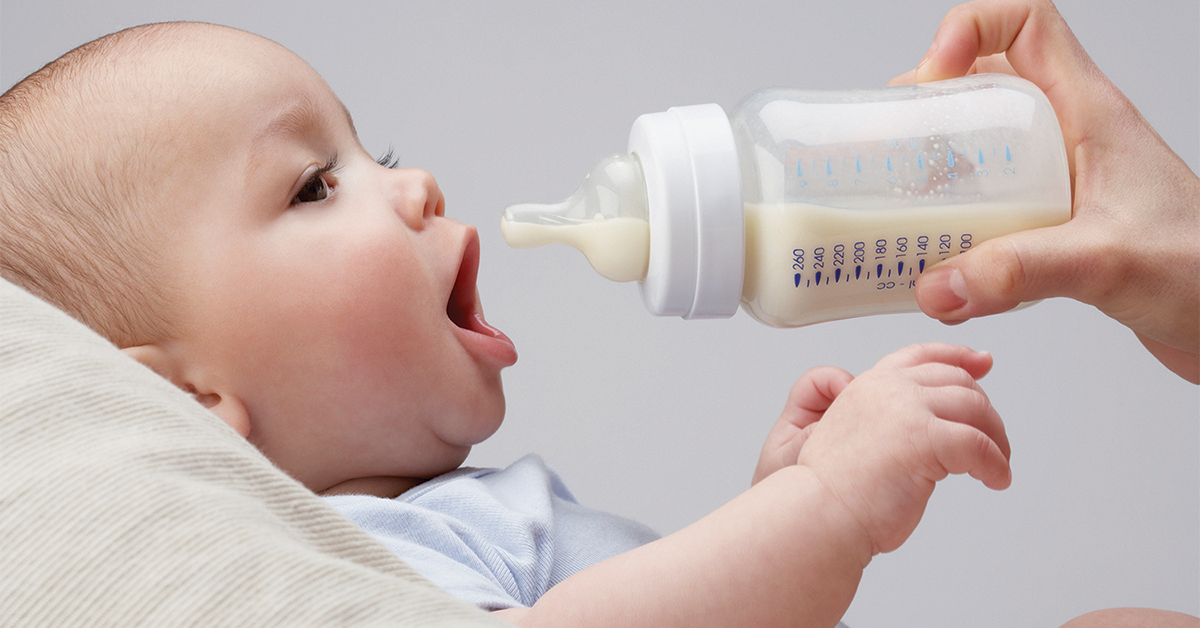What if you could bottle feed while mimicking the natural rhythm of breastfeeding? This is what paced bottle feeding is all about. This approach lets parents tune into their baby’s pace, ensuring a comfortable and balanced feeding experience. By practicing this technique, bottle-fed babies, whether with breast milk or formula, can enjoy their meals without the risk of overfeeding, setting the stage for a harmonious feeding journey.
The basics of paced bottle feeding
Paced bottle feeding isn’t just about nourishment; it’s a bond-building ritual for both baby and parent. It allows babies to regulate their milk intake, safeguarding them from tummy troubles. Especially beneficial for breastfed babies when direct nursing isn’t an option, this method is about a mindful approach to feeding. Embrace the core tenets of paced bottle feeding:
- Opt for a slow-flow nipple to mimic the gentle pace of breastfeeding.
- Let your little one take the lead, akin to the latch-on process during breastfeeding.
- Take breaks to burp and gauge your baby’s comfort level.
By weaving these practices into your routine, you’ll foster a nurturing feeding environment helping to ensure a delightful experience for you and your baby.
Why paced bottle feeding can be so beneficial for babies
Paced bottle feeding can be essential in nurturing healthy feeding habits in your little one. By not allowing the milk to flow too quickly, you are ensuring that your child learns to stop when they’re full, rather than feeling the need to consume everything offered to them. This method is especially useful for fostering self-regulation as they start on solid foods while lowering the chances of digestive problems and childhood obesity.
” Paced bottle feeding is more than simply slowing down the flow. It’s about using feeding time to help your baby learn hunger cues to regulate their own intake and the discomfort that can sometimes result from bottle feeding. The side effects are wonderful. Increased bonding, lower stress levels, and best of all—healthy eating habits that last. “
Jamie Hendrix, RN, BAN, CLC
Welia Health Certified Lactation Consultant
Step-by-step instructions for paced bottle feeding
To incorporate paced bottle feeding effectively, follow these detailed steps:
- Hold your baby appropriately: Maintain eye contact and hold your baby in an upright or side-lying position to encourage a comfortable bonding experience.
- Balancing milk flow: Before placing the nipple in your baby’s mouth, tilt the bottle downwards to ensure the milk is not immediately available. This practice helps avoid overfeeding and mimics breastfeeding.
- Encouraging suction: Allow your baby to suck on the empty nipple to mimic the initial effort required during breastfeeding before milk is drawn out. This helps control the feeding pace and prevents gulping.
- Managing bottle tilt: When your baby sucks, hold the bottle so that milk fills the nipple only halfway. This allows the milk to flow at a pace similar to breastfeeding, further preventing overfeeding and promoting comfort.
- Taking breaks: As natural feeding pauses occur, tilt the bottle downwards and keep the nipple in the baby’s mouth. When your baby begins sucking again, tilt the bottle horizontally to allow a controlled flow of milk at a pace they can manage.
- Reading cues: Stay attentive to your baby’s feeding cues, such as when they start to slow down and respond accordingly by slowing the milk flow before the bottle is empty. This practice also helps them to recognize fullness on their own.
- Burping: Just like during breastfeeding, pause to burp your baby gently. This helps in comfortable digestion and signals the end of the meal.
This helpful video demonstrates paced bottle feeding for both bottle and breastfed babies:
Incorporating paced bottle feeding into your routine
Moving towards a paced bottle feeding system is a journey that may take time, but it’s truly worth it! Begin by embracing the core principles during feeding sessions and refine your technique gradually. Remember, mastering this skill may require patience and practice – just like many new experiences in parenting.
Troubleshooting common issues with paced bottle feeding
Unlocking the benefits of paced bottle feeding may come with its share of hurdles that parents may face initially:
- Baby’s resistance: Some babies may resist the initial slow flow of milk. In such cases, a pacifier or dipping the nipple in milk before feeding can help.
- Inconsistency: Maintaining the technique throughout the entire feeding can be tough, but practice and awareness will improve consistency.
- Burping difficulties: If your baby is difficult to burp, try different positions and gentle back rubs to help ease the process.
Tips for a calm and nurturing experience for all
For a calming and nurturing time with your little one, here are some extra tips to enhance your bond:
- Set the scene: Find a cozy, quiet spot free of distractions for feeding time.
- Stay connected: Maintain eye contact and chat with your baby while feeding to strengthen your connection.
- Routine matters: Stick to a consistent feeding schedule to establish predictability and comfort for your baby.
Paced bottle feeding is a game-changer for new parents. Dive into this guide, be patient with yourself, and watch your baby thrive. Remember, practice makes perfect! Your dedication to learning this skill will result in a happier, healthier feeding journey for you and your little one.
Contact Welia Health for help
Welia Health’s Certified Lactation Consultants offer support for more than breastfeeding alone. Please call the Lactation Helpline at 320.225.3625 with any questions you about paced bottle feeding.













